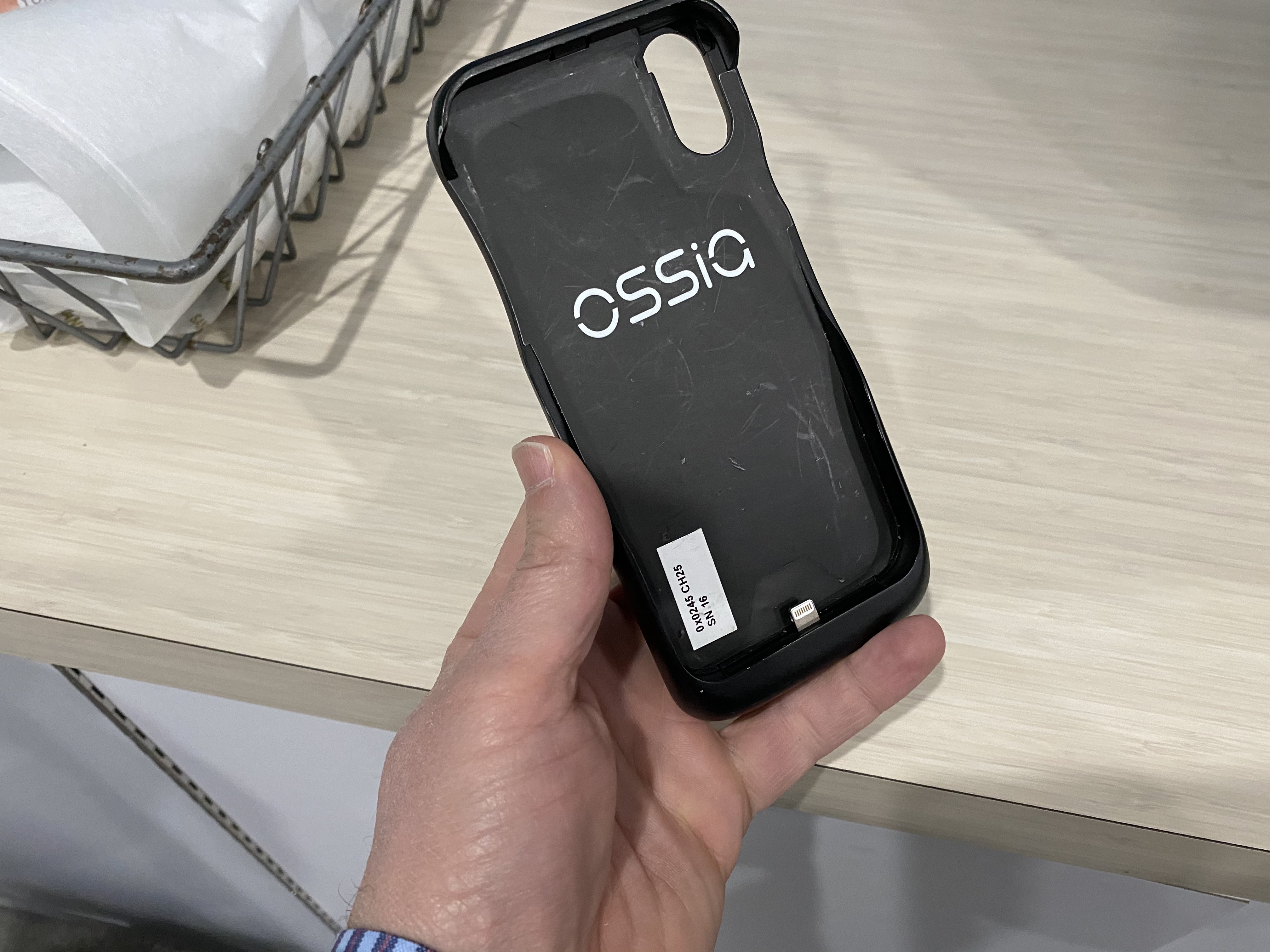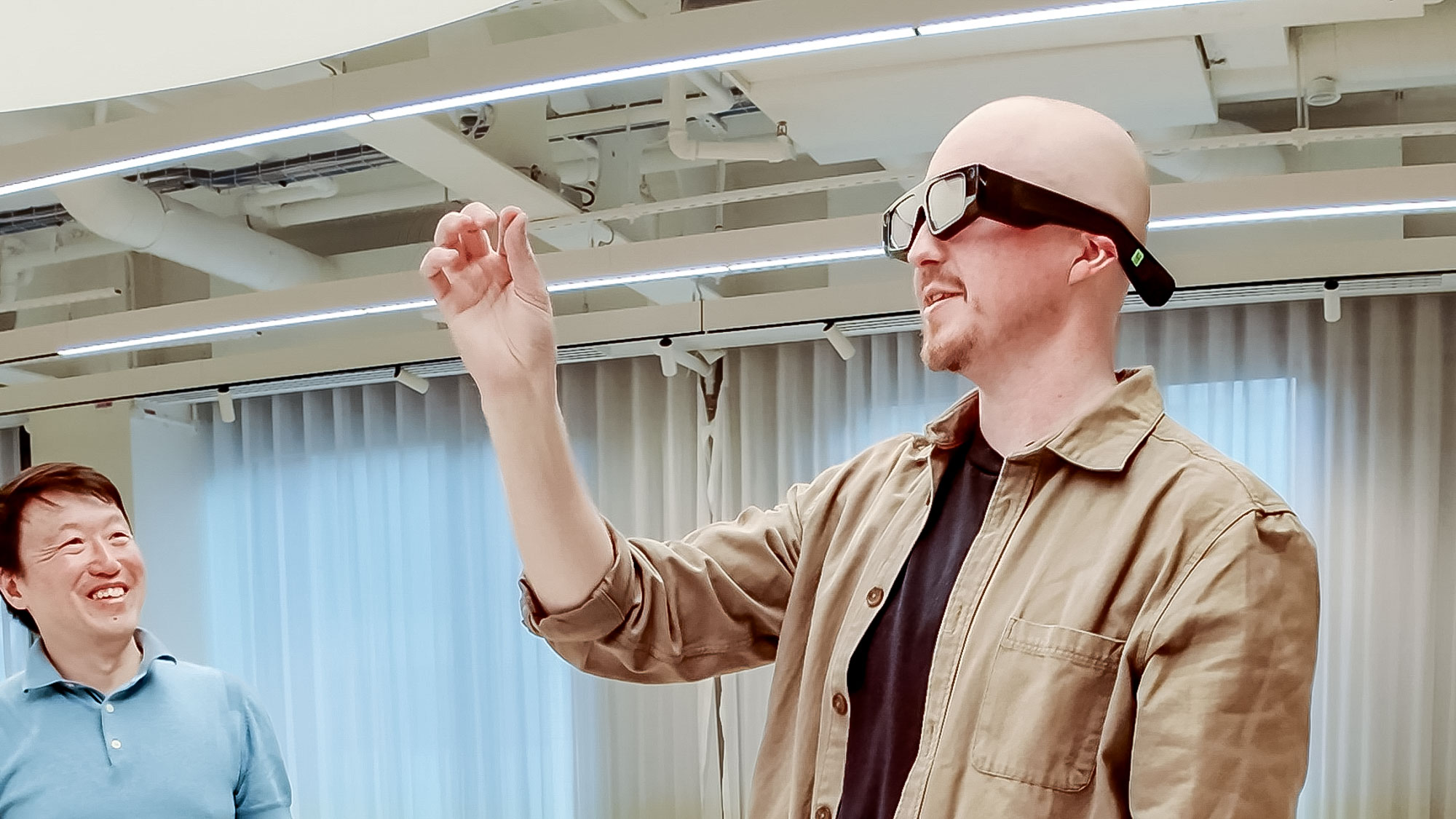The state of wireless power: When will charging happen over the air?
Guru uses highly focused radio waves to charge devices over the air, but it joins a crowded field

LAS VEGAS - Another CES, another promise of truly wireless power coming into our lives in the very near future. Year after year we've seen demo after demo but no real shipping products.
But Guru, a startup based in Pasadena, California, says that its solution is different, and better than anything else that’s out there. Wait, haven't we heard that before, too?
"The basic science is proven, but there are structural market problems to overcome and companies have run into implementation issues, said Avi Greengart, lead analyst at Techsponential.
At CES 2020, I got a demo of Guru’s over-the-air wireless charging tech and spoke to company CEO Florian Bohn to learn how it all works. I also checked out a couple of Guru's direct competitors — Ossia and Wi-Charge — to see how the true wireless charging war is shaping up.
What is Guru and how is it different?

Guru is a "zero-contact" energy system that uses radio waves to carry energy through the air, from a Guru generator to a device with a recovery unit (basically the receiver). This unit has a thin array of circuits that announces it presence to the generator, and also determines how much energy the gadget needs.
The generator converts electricity into high-frequency millimeter wave radio energy, similar to what’s being used to deploy 5G networks. The use of mmWaves is a critical component of Guru, because this allows the radio waves beams to be highly focused. This is what Guru calls Smart RF Lensing.
"Smart RF Lensing allows us to achieve long range, efficient power deliver with small product form factors," said Bohn.
Sign up to get the BEST of Tom's Guide direct to your inbox.
Get instant access to breaking news, the hottest reviews, great deals and helpful tips.
The recovery unit could be placed on the back of a device, or embedded directly into it. This unit could also potentially be used in things like phone cases or smart home devices, such as robot vacuums or security cameras.
Guru in action

At CES, Guru was showing off a couple of examples of how its wireless charging might work. One was Rovee, a robot vacuum with a Guru generator inside. The idea was that that it could charge other IoT gadgets around your home as it roamed around.
Another example was a lamp-sized desktop device that could be deployed in a conference room, which would charge multiple smartphones at the same time.
I got an up-close look at the third prototype from Guru: a ceiling-mounted generator that can send power to a receiver pad attached to a phone. I could see that the generator was delivering power, because a Guru rep also waved a tiny light bulb with a receiver attached to it around the base of the device. The light bulb lit up when the rep brought it near the generator.
Is Guru safe?

Because the mmWave beams are directed and focused, Guru says that the signals go only where you want them to, and nowhere else. Wi-Fi, by contrast, spits out energy in all directions. Guru also claims that its energy beams have “shallow penetration depth” and cannot reach internal organs.
But Guru also doesn’t take any chances. As an additional safety measure, there’s sensing technology that pauses the energy beams within milliseconds if a pet or person gets in the beam’s path. I saw this in person during my demo.
"We are taking consumer safety concerns seriously," said Bohn. "We are employing redundant mechanisms and techniques to abide by and surpass all the applicable regulations."
When is Guru coming to market and in what form?
Bohn couldn’t give any specifics about when Guru-enabled products will be shipping to consumers, but it's not soon. That’s because the company is initially targeting commercial applications, such as retail environments and warehouses.
"I expect GuRu enabled products will be launched on a larger scale within the next 24 months (or sooner)," said Bohn. "Industrial applications and lower power, shorter range consumer products are somewhat more likely to be the first on the market, but we are working on developing products for a plethora of applications."
Bohn shared that consumer products in the mobile business with OEM integration are likely further down the road. But other consumer applications should be available sooner for Guru, such as computer peripheral charging, game controller charging, and smart home applications such as powering cameras and surround sound speakers.
Guru is still awaiting FCC approval, which should allow the company to bring its first product to market later this year.
The competition: Ossia Cota uses radio waves, too

There are a lot of competitors in the wireless charging-over-distance space, including Ossia. That company just debuted its Cota Home, which delivers power over the 5.8-GHz band to devices in a 30-foot range.
The transmitter isn’t too large: 30 centimeters by 30 centimeters. However, it’s important to note that Ossia has not yet received FCC clearance for its 5.8-GHz technology; only for its gadgets in the 2.4-GHz band.

Ossia is also working with phone case maker Spigen to debut the Cota Forever Sleeve, an accessory that could receive wireless power over the air. Ossia didn’t give a specific timetable, but the sleeve could launch before the end of the year.

In the meantime, Ossia has a partnership with Walmart to use display Cota wireless power products in stores. This will give the retailer the opportunity to change prices in real time on any number of products.
Ossia has also struck a deal with Galanz, which will be integrating Cota transmitters into refrigerators, air conditioning units and other appliances.
"Most consumer technologies were developed in enterprise niche markets, or were too expensive to bring to the consumer," said Hatem Zeine, Ossia CTO. "We see a straight development path between our work in the enterprise and the consumer."
Wi-Charge: Delivering power through light

I also met with another company called Wi-Charge, which uses infrared light instead of radio waves to deliver wireless power over distance. The benefits of using light instead of radio waves include delivering up to several watts, compared to just milliwatts, of power; pinpoint accuracy; and potentially less safety risk to users.
"Wi-Charge worked long and hard to obtain consumer safety certification from UL, the US Government and relevant international safety organizations," said Yuval Boger, chief marketing officer for Wi-Charge. "With Wi-Charge, power does not decrease with increased distance. We can deliver much more power over much greater distances."
You do need a clear line of sight from a transmitter to a receiver: a photovoltaic cell that converts the light into power. But Boger points out that when an RF wave hits a wall, part of it is absorbed (reducing energy) and part of it scatters. Line of sight provides precise control over where the energy goes.

The company announced six new partners at CES 2020, including Alfred smart locks, Gojo (the maker of Purell hand sanitizers), Sloan (a maker of electronic faucets) and more.
During one demo, I saw a sink made by German company Hansgrohe that automatically turned on with a motion sensor, and also had an embedded display that counted down, encouraging users to wash their hands long enough to get completely clean.
Wi-Charge says that the first products with its technology (both in residential and industrial environments) will hit the market this year. The company has pilot installations in public spaces.
Is wireless power safe?
This is not an easy question to answer, partially because different technologies use different methods for delivering wireless power over distance. But for the companies involved, safety is top of mind and all of them are seeking the necessary approvals — if they don't already have it.
"Consumers may be initially cautious around new technologies, but since any Cota applications will be FCC certified and positively impact their lives, we believe consumer adoption will occur just as it did with cell phones," said Ossia's Zeine." Our technology complies with the exact same safety exposure standards as Wi-Fi and Bluetooth.
Wi-Charge, on the other hand, uses light instead of radio waves, which consumers may trust more. "We use IR light - abundant in nature and very similar to what's emitted from your TV remote control," said Boger. "We point to the UL and other consumer safety certifications that we have. The regulators have placed much more stringent power limits on RF and microwave."
Outlook
Getting device makers to adopt these technologies is only one hurdle for manufacturers. The largest obstacle is inertia. Most people are fine with just plugging cords into the wall, and Qi chargers are fairly convenient, even though they still need to be plugged in. And consumers may be wary of bringing wireless transmitters into homes that are already filled with Wi-Fi and Bluetooth waves.
"Desktop contactless charging isn't a huge step change from today's wireless charging pads," said Greengart. "And all that assumes that consumers will accept the notion that this is safe, which may be a hard psychological conditioning barrier to overcome."
For this to really take off with consumers, it will need to be embedded in devices from major manufacturers, not as an add-on kit. Even then there will be a lot of friction on the charging side - ceiling installation and roving robots are not ideal, and desktop contactless charging isn't a huge step change from today's wireless charging pads. And all that assumes that consumers will accept the notion that this is safe, which may be a hard psychological conditioning barrier to overcome.
The main appeal of charging over the air is that you can be anywhere in your house or office, and your phone, smart home device or other gadget could be receiving power all the time. You simply wouldn’t need to charge it consciously.
But in order for true wireless charging to take off with consumers, Greengart says that it will need to be embedded in devices form major manufacturers and now sold as an add-on kit.
From the looks of things here at CES, 2020 will be yet another proving ground year for wireless charging over the air. We’ll likely see commercial deployments in places like restaurant bathrooms and retail shelves before consumers get their hands on this technology, but at least it's a step in the right direction.
Now 2021, that could be a different story...
Mark Spoonauer is the global editor in chief of Tom's Guide and has covered technology for over 20 years. In addition to overseeing the direction of Tom's Guide, Mark specializes in covering all things mobile, having reviewed dozens of smartphones and other gadgets. He has spoken at key industry events and appears regularly on TV to discuss the latest trends, including Cheddar, Fox Business and other outlets. Mark was previously editor in chief of Laptop Mag, and his work has appeared in Wired, Popular Science and Inc. Follow him on Twitter at @mspoonauer.

